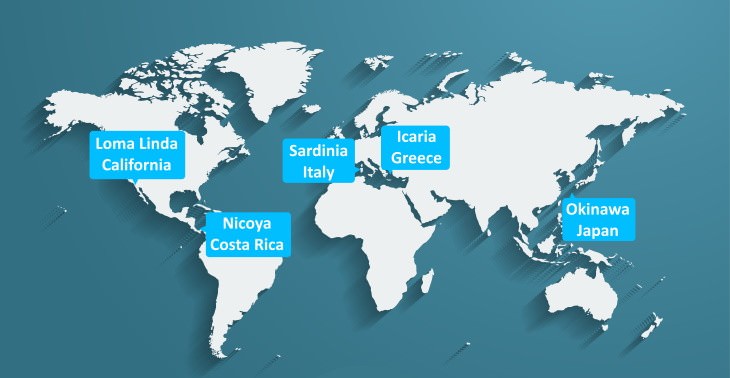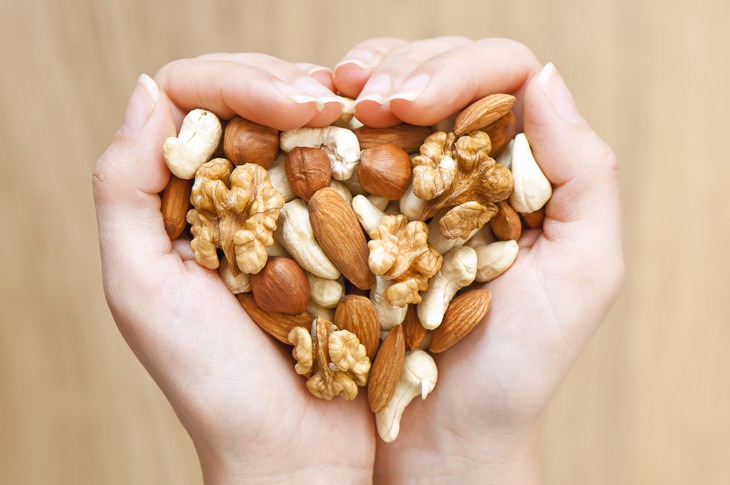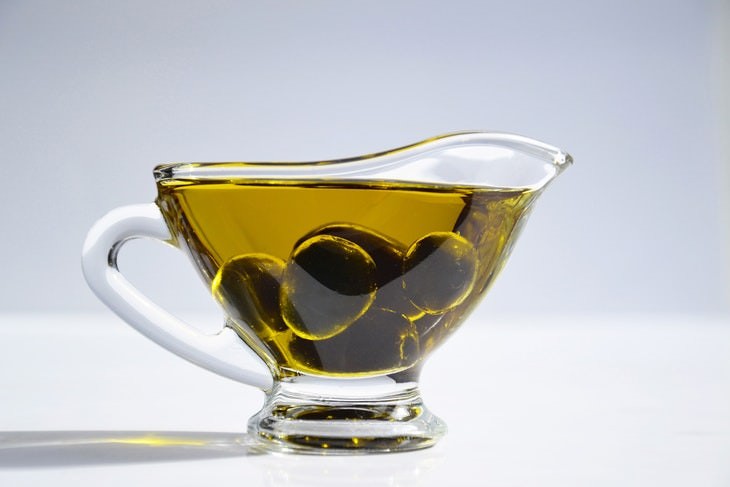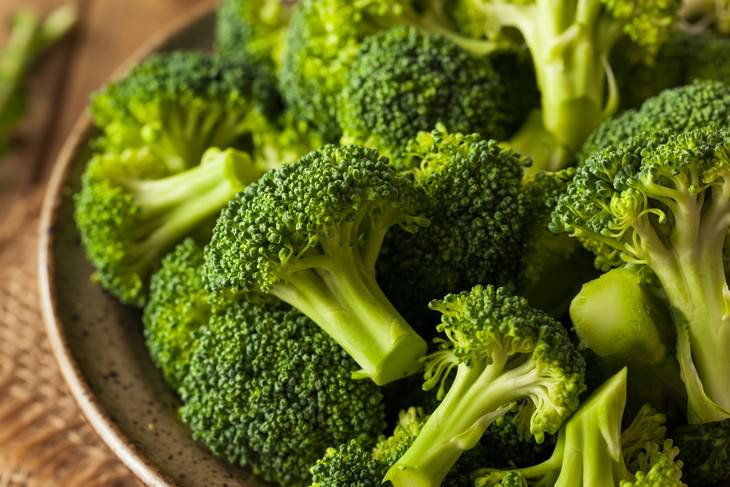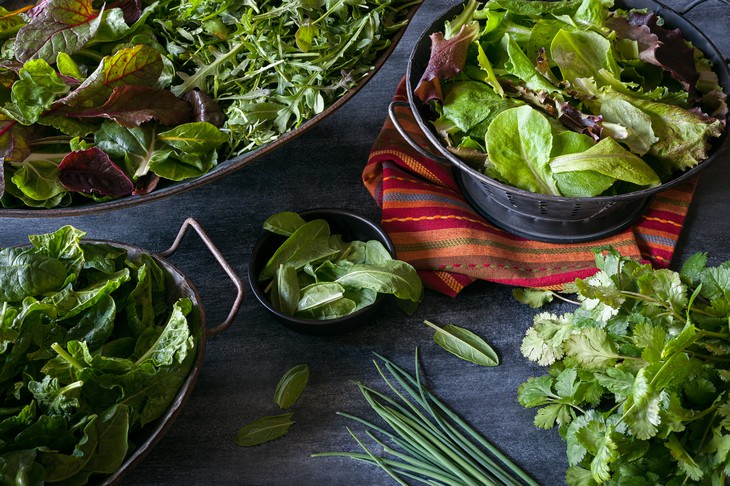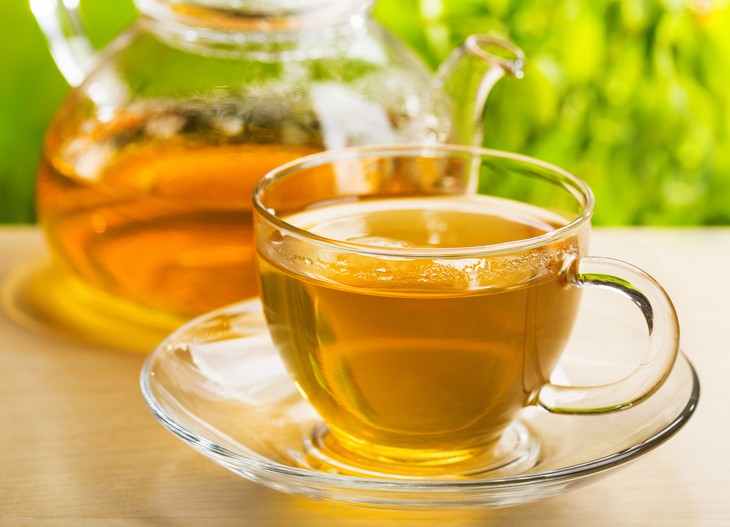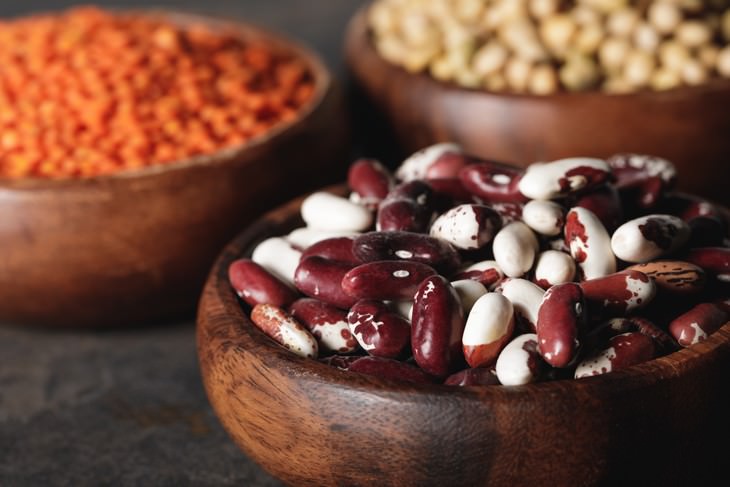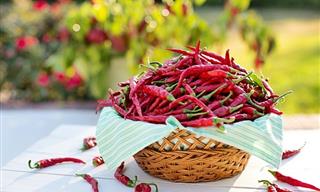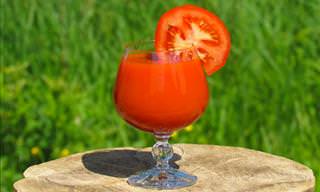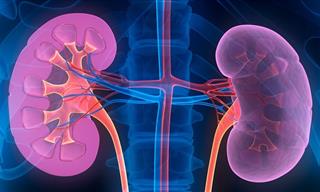Blue Zones Around the World
Such regions include the island of Sardinia in Italy, as well as Okinawa, Japan, Loma Linda, California, and others (see map above). These places are often referred to as ‘blue zones’, a term coined by author and explorer Dan Buettner. In these regions, the average life expectancy exceeds that of its surrounding regions by decades.
For example, the average American lifespan across sexes is 78 years, but the members of the Loma Linda community in California live 11 years longer on average. The story is the same with all the rest of these locations, but the situation has reportedly changed for the communities in Okinawa and Sardinia where the younger generations started straying away from the traditional diet and life expectancy already started to drop.
However, even these two last examples are proof that it's precisely the traditional diet and nutrition habits in these regions that promote longevity and health, although activity levels and a sense of community are two overarching themes through all of these communities as well.
Still, in this article, we clearly focus on the diet aspect in these regions, namely the food and drink staples, 10 of which we discuss below:
1. Sweet Potato
Sweet potatoes make up a whopping 70% of the traditional Okinawa diet, where the average lifespan is 90 years. As a matter of fact, traditional Okinawan cuisine consists of a lot less rice than the rest of Japan, only 1 cup a day compared to 4.5 cups of yams. Both purple and orange sweet potatoes are used in recipes, and a common way of eating these would be by preparing them with sesame seed oil and green onions.
Sweet potatoes are an excellent source of carotenoids, potassium and B vitamins and are a lot more nutritious than regular potatoes. Yams have been associated with cardiovascular health and other benefits, which we discuss in greater detail here: The Health Benefits of Sweet Potatoes
2. Nuts
A prominent feature in all of the blue zones are nuts, with the Loma Linda commune including nuts as an important protein source since their diet is vegetarian. Apart from being packed with proteins, nuts are also an excellent source of plant fats and other nutrients, with each nut variety having its own unique concoction of minerals and vitamins. Just two handfuls of any nuts of your liking a day will help you live a longer and healthier life.
3. Olive Oil
It's no secret that olive oil is a staple of Mediterranean cuisine, but it should also be noted that traditional Italian and Greek recipes from Sardinia and Icaria rarely use the oil for frying. Instead, olive oil is traditionally combined in salads and eaten with bread. The life expectancy in Icaria, a Greek island in the Aegean Sea where olive oil is a staple ingredient, is over 90 years.
Olive oil is one of the most well-researched plant oils, and it had been found to have anti-inflammatory and antioxidant capabilities. The oil can also aid in preventing several chronic illnesses, such as diabetes, arthritis, some cancers and even Alzheimer's. You can learn more about the health effects of olive oil here: The Unrivaled Health Benefits of Olive Oil
4. Oats and Barley
Another group of ingredients prominent in the Loma Linda commune, which actually bases its diet on foods from Biblical times, are oats and barley, slow-cooked or steel-cut. These simple, yet effective foods are known to contain plenty of essential fiber, which ensures optimal digestion and promotes a healthy gut microbiome.
Oats, in particular, are known for their calming and anti-inflammatory effects on the human body. Oatmeal has been also associated with decreased cardiovascular risk and blood sugar-stabilizing properties.
5. Red Wine
Another common trait among many, although not all of the blue zones, is a low dose of alcohol, particularly dry red wine. Just one glass of wine with dinner is a common feature of Mediterranean regions in particular, and the polyphenols red wine contains are suggested to have a multitude of health effects, particularly a skin rejuvenating and an overall anti-aging effect.
Of course, moderation is key, as is the avoidance of overly sweet wine varieties, as these can be loaded in sugar. Polyphenols are also associated with digestive health, as well as prevention of diabetes and cardiovascular problems.
6. Cruciferous Vegetables
Mothers all over the world, rejoice! All those times you were forcing your kids to eat broccoli (and peas, but more on that later), you were absolutely right, as it seems like the most long-lived people on Earth eat a lot of broccoli, brussels sprouts, cabbage, cauliflower, kale, and other cruciferous veggies.
These vegetables are very popular in Sardinia, Italy, where the high intake of cruciferous veggies was associated with a lower incidence of thyroid problems. Apart from that, these vegetables contain a ton of vitamins and other essential minerals, not to mention a lot of fiber, which makes them a must-have on any healthy meal plan.
7. Fruit (all kinds)
All of the long-living communities had this one thing in common - they ate a lot of fresh seasonal fruit. It's important to note that it's better to indulge in whole fruit than juicing them, as this way you'll be getting both the nutrients from every fruit variety and the added fiber. Any fruit variety will do either, so choose your favorite and munch away.
8. Leafy Greens (all kinds)
Another mutual theme in all of the regions was an abundance of greens in nearly every meal. Greens are used as a garnish on top of meals and as salad bases. Greens (and seaweed) are especially appreciated in the Okinawa diet, as well as in the Icaria diet, where dandelion leaves, spinach, and fennel are combined with olive oil in a delicious side dish.
Greens have long established themselves as a health-boosting ingredient capable of stabilizing inflammation levels and containing lots of vitamins and antioxidants. Depending on the type of greens you choose, be it spinach, parsley, dill or lettuce, you will get a different mix of benefits, so we recommend combining and switching up your greens as much as you can.
9. Green and Herbal Tea
As one might expect, green tea is a staple drink in Okinawa, and the antioxidant-rich drink is renowned for its multitude of antioxidant and preventative benefits, upon which we have touched upon previously in the article 8 Health Benefits of Green Tea.
Apart from green tea, however, a common recurrence, particularly in the Greek diet is herbal tea, particularly sage tea. Notably, none of the two are typically sweetened in these regions, so it's best if you try adding as little sweetener as you can, too, preferably none whatsoever.
10. Legumes
Did we leave the best for last? Certainly so, as one of the main common ingredients in all of the regions of exceptional longevity are legumes. Moreover, beans, peas, lentils, chickpeas, and soy products are often the dominant, if not the only protein source in these diets.
In Okinawa, soy products, such as tofu, natto, miso, and edamame make up 5% of the entire diet, more than both meat and fish combined. The Californian group abstains from meat completely, and in the rest of the regions, meat is a rare treat while beans are a daily staple.
On average, people in the blue zones eat about 1 cup of beans or legumes on a daily basis, with the Nicoya group from Costa Rica preparing them in a corn tortilla while the Mediterranean groups typically favor lentils and chickpeas as a daily staple, so if you take one lesson from this article, it's to eat more legumes.
 Go to BabaMail
Go to BabaMail


